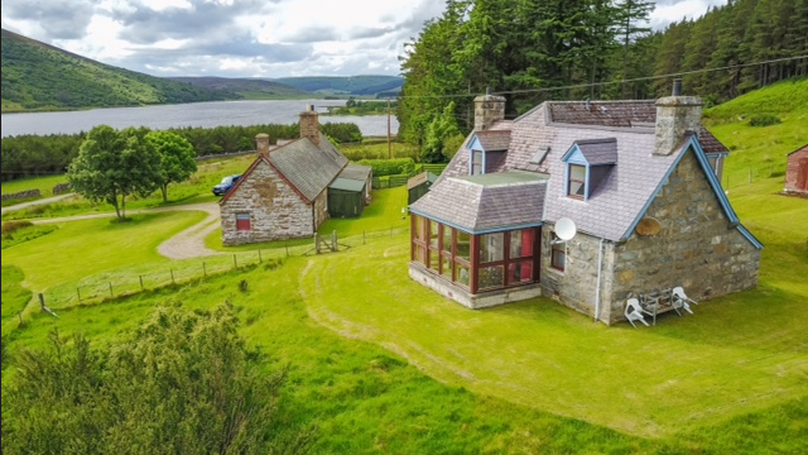As fewer and fewer farm and estate properties are needed for tied workers, many landowners find themselves with cottages and houses sitting unused and unloved.
They are also a financial drain, as the costs of maintaining an empty property with no return are prohibitive and pointless. So what are the options?
Selling releases a capital sum which can be used to invest in other properties or agricultural needs, but it does mean losing control of the property which may not actually offer a practical solution depending on the location in relation to other estate properties or farm steadings.
Private residential tenancy or holiday let?
Letting in some form is the obvious solution, providing income while keeping ownership within the estate or farm portfolio. Residential letting takes two forms: long-term residential letting to one set of tenants, or holiday letting on a short break, weekly or fortnightly basis.
Private residential tenancy (PRT)
There is definitely a growing market for long-term lets. With that first step on the property owning ladder more difficult for younger buyers to make, long-term letting has become the best option for many. The Galbraith Castle Douglas office saw an increase of 33% in viewings from the first quarter of 2017 to the final quarter, and the number of registered lettings applicants more than doubled. There is no shortage of tenants seeking good quality family homes and prepared to pay decent rents for them.
The steady income brought by a long term let is attractive with the average rent for a 2/3 bedroom cottage being around £475pcm and a small farmhouse being between £650-£700pcm in Dumfries and Galloway. However while there is also the bonus of the tenant taking responsibility for Council Tax and utilities, there are some pitfalls to be aware of.
Long-term residential letting in Scotland changed on December 1, 2017 from the Short Assured Tenancy (SAT) to the Private Residential Tenancy (PRT). The grounds for possession by a landlord have been greatly reduced and in particular the ‘no fault’ ground has been removed making it much more difficult to remove a tenant if things aren’t going well. Additionally, the period of notice required to be given by a tenant has been shortened to just 28 days, so a landlord could in theory find themselves having to find tenants several times a year for the same property. This means careful selection and referencing of tenants is more vital than ever before, so using a good letting agent like Galbraith is essential.
Holiday Letting
Holiday letting could be the most flexible option especially with ‘staycations’ becoming increasingly popular. Cottages & Castles, one of Scotland’s leading holiday let companies, reported record-breaking bookings for 2017 with an increase of 19% compared with the previous year and an increase of 47% overall in the period 2015-17.
But where to start, and what is involved?
When Robert and Melinda Kennedy married in 1999, they took over the holiday letting business started by Robert’s parents at Orroland Estate in Dumfries and Galloway in the mid-1980s. Two cottages had been occupied by full-time farm workers but as farming methods on the estate evolved, the employees were no longer required. Back then the self-catering industry was very different and the cottages were pretty basic.
Since then, the family has purchased Orroland Lodge, which had been in the same occupation since the 1920s and was not fit for holiday letting, there being no water in one wing of the house. The Kennedys embarked on an extensive programme of work on the property which had to be kept to a tight deadline and budget, as well as doing ongoing improvement and maintenance work on the two original cottages.
Now all three properties are marketed together as Orroland Holiday Cottages and are finished, equipped and maintained to very high standards. Robert explained:
Guests’ expectations are higher than ever – after all nobody really wants to go on holiday in a house that’s less convenient or well specified than their own. We allocate 25-30% of turnover each year towards maintenance and improvements.
Other costs to consider are the cleaning and changeover procedures. Originally the family did all the work themselves, but as their other business began to grow they have had to employ people on both a full-time live-in and part-time basis to manage cleaning, suppliers, property and grounds maintenance. However, Robert’s parents, William and Alice, remain very active in managing the environs and Orroland Lodge.
All the investment paid off for the Kennedy’s with the three-bedroom cottages renting from £620 to £1,050 per week and the seven-bedroom Orroland Lodge from £1,980 to £3,800 per week, depending on the season. School holidays tend to be the peak time for occupancy. In 2017 25% of bookings were repeat business.
Nonetheless, Robert and Melinda prefer to aim for healthy profit over high occupancy rates.
Our highest ever occupancy was 94%. That year we learned a lot about pricing and what happens when you can’t get in to a property to maintain it. Time up ladders is crucial.
Online booking systems and agencies
Through running the holiday lets at Orroland, Robert and Melinda recognised a need for a dedicated online booking system for the selfcatering sector and ten years ago they started SuperControl. Today 1,700 holiday rental owners and agencies trust SuperControl’s booking and management software to run 29,000 selfcatering properties around the world.
Our job at SuperControl is to keep pace with the needs of our clients. Over the past five years we have invested in building better links with the main booking websites. It is clear to us that the multinational giants like booking.com, Expedia, HomeAway and TripAdvisor will continue to be a driving force in our sector. This range of marketing channels offers a great opportunity to people starting in self-catering.
Much of the growth in self-catering has been centred around urban markets in the last few years, but the traditional rural market is still going strong and well worth considering.
Of course, it may suit some holiday let businesses to use an agency for marketing and booking instead of doing it all themselves. Cottages & Castles can offer more than 30 years of experience to clients, with 41,000 visitors to the website every month, and a monthly social media reach of 250,000 people. An agency will charge commission on bookings, but from an owner’s point of view they save on the cost and work of running their own website.
Overall, Robert and Melinda feel self-catering is a profitable business despite the expenses being much higher than with long-term letting.
For new entrants to the sector their advice is to be prepared to continually invest to maintain the high standards expected by today’s guests and also to invest in professional photography of the interiors and environs. Careful marketing pays dividends and the Kennedys try to highlight the unique aspects of their properties such as the spectacular coastal location, privacy and freedom Orroland provides.
It is also important to be flexible about the length of stay available to guests. According to SuperControl’s 2017 statistics, 134,984 bookings were handled in Scotland through their system. Of those bookings, 74% were for short breaks of one to six nights, with only half starting on a Friday or Saturday.
All the Kennedy family’s hard work since Robert’s parents began holiday lets back in the 1980s has paid dividends, and not just financially:
One family who came during those first couple of years is still holidaying at Orroland nearly 40 years later!
For advice on all aspects of letting your properties contact your local Galbraith office where our teams of professionals have a wide range of knowledge and expertise.

